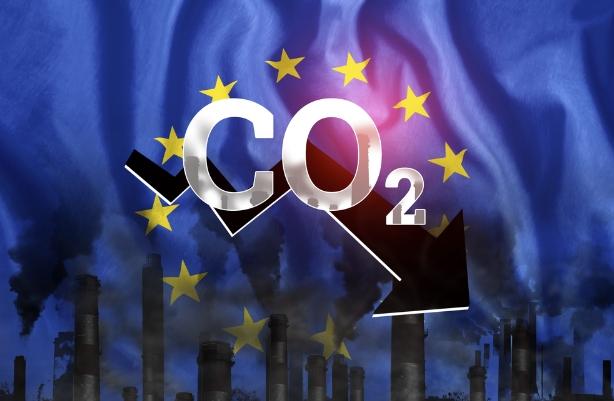The European Commission recently unveiled the Carbon Market Report, shedding light on the performance of the EU Emissions Trading System (EU ETS) for the span of 2022 and the initial half of 2023.
Here are key points of this report.
- Objective of the EU ETS: The EU ETS sets limits on greenhouse gas emissions for power, aviation, and energy-intensive industrial sectors, covering around 36% of the EU’s total greenhouse gas emissions.
- Annual Reduction Targets: The system decreases the emission cap annually to align with EU climate objectives. Recent enhancements to the EU ETS intend to support the EU’s goal of cutting emissions by at least 55% by 2030 (compared to 1990 levels).
- Emission Reduction Achievements: The system has successfully reduced emissions in the power and industry sectors by 37.3% compared to 2005 levels.
- Recent Disruptions: The COVID-19 pandemic and the 2022 energy crisis have posed challenges. These disruptions led to a slight uptick in emissions because of an increased dependence on coal due to high natural gas prices and decreased manufacturing output. However, despite these hurdles, emissions from these sectors in 2022 were still 7% lower than the figures from 2019 (pre-pandemic).
- Auction Results and Revenue: Auctioning of allowances went as expected. The carbon pricing mechanism remained largely stable, garnering close to €39 billion in 2022, bringing the total revenue since the ETS’s inception to €152 billion.
- Revenue Utilization by Member States: In 2022, Member States directed, on average, 76% of their ETS revenue towards climate and energy initiatives, including measures to counteract the impacts of the energy crisis. In-depth details about this spending are in the Climate Action Progress Report 2023.
- Modernisation and Innovation Funds: The Modernisation Fund supported the energy sector’s modernization, and the Innovation Fund allocated almost €2 billion to innovative projects in energy and industrial transformation.
- Market Stability and Credibility: In 2022, the Market Stability Reserve continued to deduct excess allowances and started invalidating allowances in 2023. Oversight rules ensure the carbon market operates efficiently, and a framework exists to monitor, report, and verify emissions, ensuring the EU ETS’s environmental credibility.
- Future of the EU ETS: The EU ETS is pivotal for Europe’s green transformation. The system, post its 2023 update, is poised to offer long-term incentives for decarbonisation. By 2024, the maritime sector will be included in the ETS, and by 2027, a new ETS will cover buildings, road transport, and smaller industries, ensuring carbon pricing for three-quarters of EU emissions. This expansion aims to garner more resources to aid the green transition for businesses and individuals.
Effective market oversight and a robust monitoring system ensured the EU ETS’s environmental integrity.
The 2023 revision fortifies the EU ETS, promoting extensive decarbonisation. By 2027, with the inclusion of maritime, building, road transport, and small-emitting industries, the EU ETS will encompass around 75% of the EU’s emissions. This expansion will further bolster support for the green transition for businesses and individuals. The Commission anticipates more detailed outcomes from the ETS revision in upcoming reports.
So, the EU ETS remains a central tool for Europe’s green transition, with its recent enhancements ensuring it remains effective and relevant for the future.



